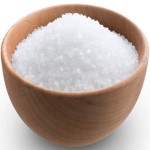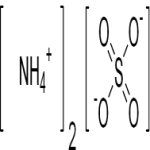CAS Number 7783-20-2, Ammonium Sulfate or Ammonium Sulphate USP NF Analytical Reagent FCC Food Grade Manufacturers Exporters







CAS Number 7783-20-2, Ammonium Sulfate or Ammonium Sulphate Manufacturer Exporter
For Properties Specifications of Ammonium Sulfate or Ammonium Sulphate Click Properties, Specifications of Ammonium Sulfate or Ammonium Sulphate Manufacturer.
For Uses of Ammonium Sulfate or Ammonium Sulphate Click Uses of Ammonium Sulfate or Ammonium Sulphate Manufacturer.
For For SDS MSDS Sheet of Ammonium Sulfate or Ammonium Sulphate Click SDS Safety Data Sheet MSDS Sheet of Ammonium Sulfate or Ammonium Sulphate Manufacturer.
The Properties and Specifications of Ammonium Sulfate or Ammonium Sulphate:
Ammonium Sulfate USP NF Grade Specifications
(NH4)2SO4 --132.14 -- CAS 7783-20-2
Ammonium Sulfate contains not less than 99.0 percent and not more than 100.5 percent of (NH4)2SO4.
Identification: A solution (1 in 20) responds to the tests for Ammonium and for Sulfate.
Microbial limits: The total aerobic microbial count does not exceed 1000 cfu per g, and the total combined molds and yeasts count does not exceed 10 cfu per g.
pH: between 5.0 and 6.0, in a solution (1 in 20).
Residue on ignition: Not more than 0.005%, determined on a 20-g sample.
Limit of insoluble matter: 0.005%.
Limit of phosphate: To pass the test.
Limit of chloride: To pass the test: not more than 5 microgm of chloride per g is found.
Limit of nitrate: To pass the test: not more than 0.001% is found.
Limit of iron: To pass the test: not more than 5 microgm of iron per g is found.
Ammonium Sulfate Analytical Reagent Grade Specifications
Ammonium Sulphate
(NH4)2SO4
Formula Weight.: 132.14
CAS Number: 7783-20-2
REQUIREMENTS
Assay of Ammonium Sulphate or Ammonium Sulfate: 99.0% (NH4)2SO4
pH of a 5% solution: 5.0-6.0 at 25C
MAXIMUM ALLOWABLE
Insoluble matter: 0.005%
Residue after ignition: 0.005%
Chloride (Cl): 5 ppm
Nitrate (NO3): 0.001%
Phosphate (PO4): 5 ppm
Heavy metals (as Pb): 5 ppm
Iron (Fe): 5 ppm
Ammonium Sulfate FCC Food Grade Specifications
(NH4)2SO4 Formula weight 132.14
INS: 517 CAS: 7783-20-2
DESCRIPTION
Ammonium Sulfate occurs as colorless or white crystals or granules that decompose at temperatures above 280°. One gram is soluble in about 1.5 mL of water. It is insoluble in alcohol. The pH of a 0.1 M solution is between 4.5 and 6.0.
Function: Dough conditioner; yeast nutrient.
REQUIREMENTS
Identification: A sample gives positive tests for Ammonium and for Sulfate.
Assay: Not less than 99.0% and not more than 100.5% of Ammonium Sulphate or Ammonium Sulfate (NH4)2SO4.
Lead: Not more than 3 mg/kg.
Residue on Ignition: Not more than 0.25%.
Selenium: Not more than 0.003%.
The Uses of Ammonium Sulfate or Ammonium Sulphate:
Food companies commonly use it by adding ammonium sulfate to bread products as a dough conditioner. It's also a component in fire extinguisher powder and flame-proofing agents. And it serves many purposes in the chemical, wood pulp, textile and pharmaceutical industries. The most common use is as a soil fertilizer.
The MSDS-SDS Hazard Statement of Ammonium Sulfate or Ammonium Sulphate:
Ammonium Sulfate SDS Safety Data Sheet
MSDS Sheet, Material Safety Data Sheet 03-Dec-22
Section1. Product Information
Product Name & Other Names : Ammonium Sulphate or Ammonium Sulfate or Diammonium Sulfate.
CAS Number: 7783-20-2
EINECS EC Number: 231-984-1
Molecular Formula : (NH4)2SO4
Molecular Weight : 132,14 g/mol
Relevant uses and uses advised against (if any): Industrial use only.
Section 2. Hazards Identification
GHS, Globally Harmonized System Classification in accordance with 29 CFR 1910
Classification according to Regulation (EC) No 1272/2008
Not a hazardous substance or mixture according to Regulation (EC) No. 1272/2008.
This substance is not classified as dangerous according to Directive 67/548/EEC.
Labeling according Regulation (EC) No 1272/2008
GHS Label Elements None |
Signal Words: None
Precautionary statements:
P262: Do not get in eyes, on skin, or on clothing.
P264 Wash skin thoroughly after handling.
P273 Avoid release to the environment.
P305+ P351 + P338 IF IN EYES: Rinse cautiously with water for several minutes. Remove contact lenses, if present and easy to do. Continue rinsing.
P337+P313 If eye irritation persists: Get medical advice/ attention.
P330: Rinse mouth.
P360: Rinse immediately contaminated clothing and skin with plenty of water before removing clothes.
Section 3. Composition/Information on Ingredients
Product Name & Other Names: Ammonium Sulphate or Ammonium Sulfate or Diammonium Sulfate.
CAS Number: 7783-20-2
EINECS EC Number: 231-984-1
Section 4. First Aid Measures
Always seek medical attention after first aid measures are provided.
Skin: Wash promptly with soap and water and flush with water until chemical is removed. Remove any contaminated clothing and wash before reuse. Get medical attention for irritation.
Eyes: Flush promptly with plenty of water for at least 15 minutes. Get medical attention.
Inhalation: Remove to fresh air. If breathing is difficult, give oxygen if a qualified operator is available. Get medical attention for irritation or discomfort.
Ingestion: If conscious drink 2 to 4 glasses of water and induce vomiting by touching back of throat with finger.
Section 5. First Aid Measures
Flash Point: Not applicable
Extinguishing Media: Any standard agent may be used. If involved in a fire, flood with water.
Unusual Fire and Explosion Hazards: Ammonium Sulfate decomposes at elevated temperatures to produce toxic fumes of ammonia and sulfur oxides. If mixed with strong oxidizers such as ammonium nitrate or potassium salts (nitrite, nitrate, or chlorate), a vigorous reaction may occur. Special Information: In the event of a fire, wear full protective clothing and NIOSH-approved self-contained breathing apparatus with full face piece operated in the pressure demand or other positive pressure mode. At high temperatures under fire conditions, it may produce toxic or irritating fumes. Fire-extinguishing work is done from the windward and the suitable fire-extinguishing method according to the surrounding situation is used.
Section 6. Accidental Release Measures
Personal precautions, protective equipment, and emergency procedures: Ventilate area of leak or spill. Avoid breathing dust/fumes/gas/mist/vapors/spray. Use individual protective equipment (waterproof boots, suitable protective clothing, safety glasses, etc.). Do not approach facing the wind.
Environmental precautions: Do not let the product enter drains, soil, or water sources.
Methods and materials used for containment Cleanup procedures and Storage: Contain spilled material. Cover with an inert, non-combustible absorbent material, (e.g. sand, earth, diatomaceous earth, vermiculite). Vacuum or sweep-up and remove to an approved disposal container.
Section 7. Handling and Storage
Precautions for safe handling: Apply according to good manufacturing and industrial hygiene practices. Ensure proper ventilation. Wash thoroughly after handling. Do not drink, eat, or smoke while handling. Avoid contact with skin, eyes, and clothing. Minimize dust generation. Avoid breathing dust/fumes/gas/mist/vapors/spray. Keep container tightly closed. Avoid ingestion and inhalation. Use individual protective equipment (waterproof boots, suitable protective clothing, safety glasses, etc.).
Conditions for safe storage, including any incompatibilities: Store in cool, dry, and ventilated area away from heat sources and protected from sunlight in tightly closed original container. Keep air contact to a minimum. Store protected from heat, sparks and ignition sources and incompatible materials. Avoid contact with skin and eyes. Avoid inhalation of dust/mist/vapor. Do not store with incompatible materials like strong oxidizing agents, strong acids & bases. Avoid Sources of ignition.
Section 8. Exposure Controls/Personal Protection
Exposure Limits: No occupational have been established for this product. Keep it at <10mg/m3.
Engineering Controls: Provide local exhaust, if dusty conditions prevail.
Respiratory Protection: Where dusty or misty conditions require it, use a NIOSH approved dust or mist respirator for needed protection.
Ventilation System: A system of local and/or general exhaust is recommended to keep employee exposures as low as possible.
Personal Respirators (NIOSH Approved): For conditions of use where exposure to dust or mist is apparent and engineering controls are not feasible, a particulate respirator may be worn.
Skin Protection: Wear protective gloves and clean body-covering clothing.
Eye Protection: Use chemical safety goggles and/or full face shield where dusting or splashing of solutions is possible. Maintain eye wash fountain and quick-drench facilities in work area.
Other Control Measures: Maintain good housekeeping in work area. Handle in accordance with good industrial hygiene and safety practice.
Section 9. Physical and Chemical Properties
Appearance: Colorless to off-white crystals or granules.
Odor: Odorless
Odor threshold: Not available.
pH: 5-6 at 5% water solution.
Relative density: around 1.77
Boiling Point: > 280 °C (536 °F)
Melting Point: - 235 °C (-391 °F)
Flash point: Not available.
Auto-ignition temperature: Not available.
Decomposition temperature: Not available.
Upper/lower flammability or explosive limits: Not available.
Vapor pressure: Not available.
Vapor density: Not available.
Evaporation rate: Not available.
Flammability (solid, gas): Not available.
Partition coefficient: n-octanol/water: Not available.
Solubility in Water: (Weight %) 38% solution @ 20C
Viscosity: Not available.
Section 10. Stability and Reactivity
Normally Stable (Conditions to Avoid): It is stable under normal conditions.
Incompatibles: Oxidizers, e.g. potassium salts -nitrate, nitrite, chlorate, also chlorine or hypochlorite. Strong acids & bases. Avoid contact with zinc-clad and copper.
Hazardous Decomposition Products: Ammonia and sulfur trioxide and sulfur dioxide gases.
Hazardous Polymerization: Will not occur.
Section 11. Toxicological Information
Immediate (Acute) Effects:
Acute Oral LD50 Rat: 2840 mg/kg
Acute Inhalation LC50 Rat: > 1000 mg/m³ 8 Hours
Acute Dermal: LD50 dermal rat: 2840 mg/kg (Rat)
Carcinogenicity: No component of this product present at levels greater than or equal to 0.1% is identified as probable, possible or confirmed human carcinogen by IARC.
Mutagenic Effects: Not available.
Developmental Toxicity: Not available.
Reproductive Effects: No information available.
Section 12. Ecological Information
LC50 Fish-1: 5.2 - 8.2 mg/l (Exposure time: 96 h - Species: Oncorhynchus mykiss [static])
LC 50 Fish-2: 32.2 - 41.9 mg/l (Exposure time: 96 h - Species: Oncorhynchus mykiss [flow-through])
EC50 Daphnia-1: 423 mg/l (Exposure time: 24 h - Species: Daphnia magna)
EC50 Daphnia-2 14 mg/l (Exposure time: 48 h - Species: Daphnia magna)
EC50 Water flea (Ceriodaphnia dubia): 52 - 67 mg/l 48 hours
LC50 Pink salmon (Oncorhynchus gorbuscha): 0.068 mg/l 96 hours
LC50 Rainbow trout, donaldson trout (Oncorhynhus mykiss): 35.2 - 43.8 mg/l 96 Hours
Bioaccumulation: Not expected to bioaccumulate.
Persistence and Degradability: Not likely to persist.
Mobility: Likely to be mobile due to water solubility.
Section 13. Disposal Considerations
Other Disposal Considerations: The product is a fertilizer; therefore, waste ammonium sulfate might be used as a fertilizer. If discarded to waterways, it may promote eutrophication. Disposal must be in accordance with applicable disposal regulations.
Section 14. Transport Information
DOT USA, TDG Canada & ADR/RID Europe: Not controlled.
IMDG/IMO & IATA/ICAO: Not controlled.
Section 15. Regulatory Information
USA Regulations:
SARA Section 311/312: See section 2.
California No Significant Risk Level: None of the chemicals in this product are listed.
Section 16. Other Information
Disclaimer:
Our company provides this Ammonium Sulfate Sulphate SDS information sheet contained herein in good faith but makes no representation as to its comprehensiveness or accuracy. This Ammonium Sulfate MSDS sheet is intended only as a guide to the appropriate precautionary handling of the material by a properly trained person using this product. Individuals receiving the information must exercise their independent judgment in determining its appropriateness for a particular purpose.
Anmol Chemicals & Pharmaceuticals Pvt. Ltd. is an off-shoot of Anmol Chemicals Taloja. It is located in MIDC Taloja and it is manufacturing pharmaceutical grades of API, Excepients, Food grade and Reagent grade chemicals. Anmol Chemicals & Pharmaceuticals Pvt. Ltd. is a several decades old group of companies, engaged in manufacturing, supplying, distributing, wholesale supplies for actual users, retail or small pack supplies for research and development chemicals, fine and speciality chemicals, pharmaceutical excipients, mineral fortifiers in chemically pure, Analytical reagent grade, IP BP USP Ph Eur EP JP and other pharmaceutical grade monograph including FCC Food grade chemicals and Nutraceuticals, Mineral Fortifiers at best prices.

Ammonium Sulfate or Ammonium Sulphate Structure
CAS Number 7783-20-2, Ammonium Sulfate or Ammonium Sulphate Manufacturer Exporter
ANMOL CHEMICALS & PHARMACEUTICALS Pvt. Ltd.
India, USA, Europe, UAE
TELEPHONE: +912223770100
Navi Mumbai, INDIA
e-mail: info(At the rate i.e. @)anmol.org
Copyright. 23-nov-24
We manufacture:
Glacial Acetic Acid Manufacturer
Ammonia Solution Concentrated or Ammonium Hydroxide Solution
Aluminum Chloride Hexahydrate Anhydrous
Aluminum Chlorohydrate Solution Powder
Dihydroxyaluminum Aminoacetate
Dihydroxyaluminum Sodium Carbonate

